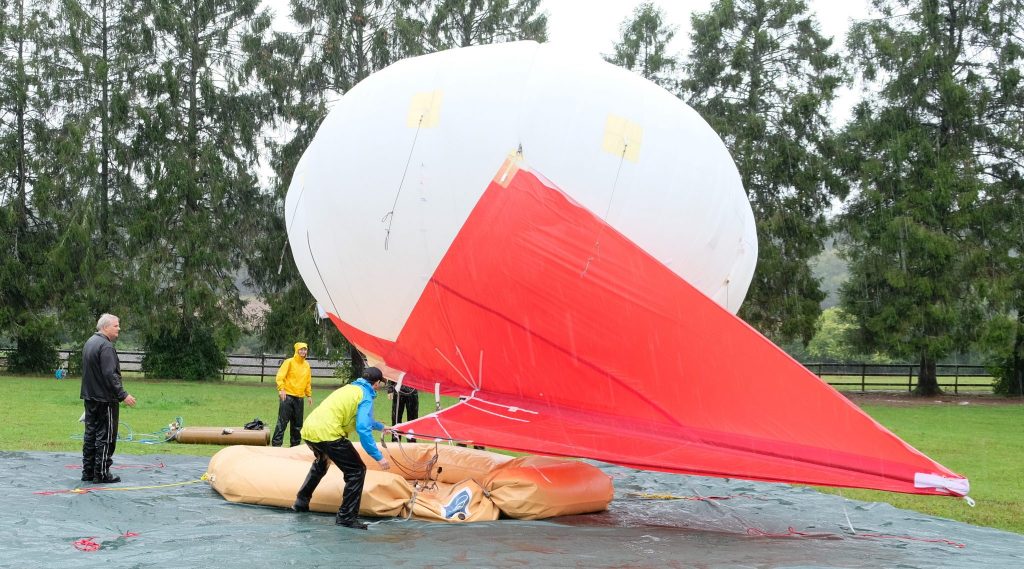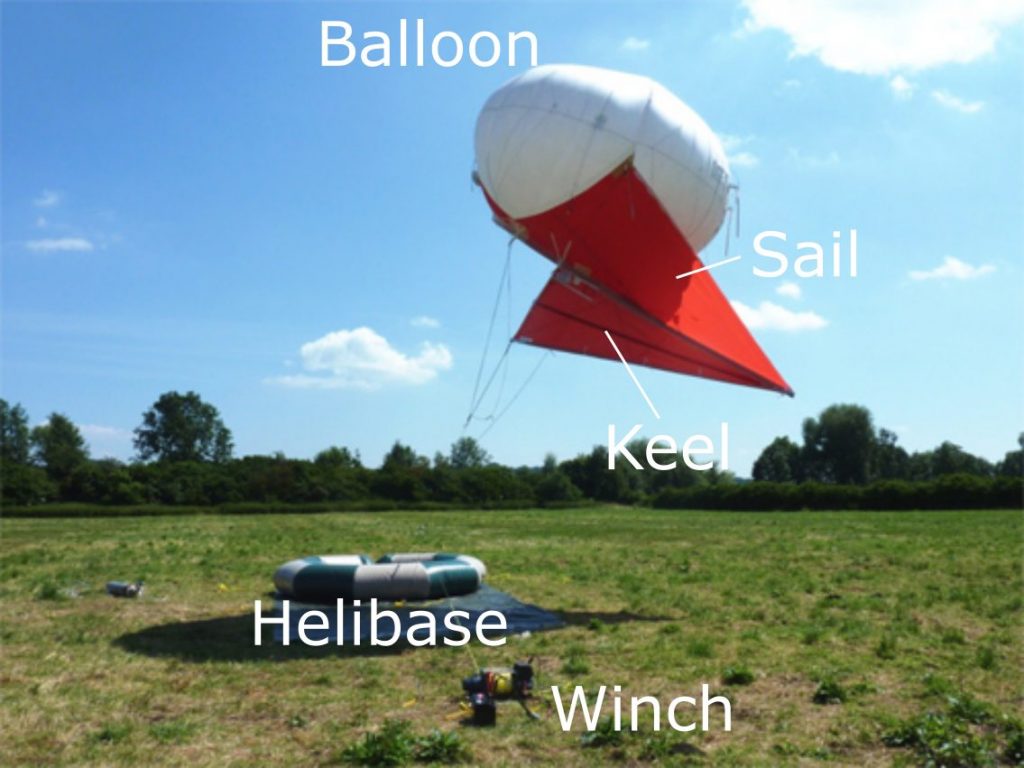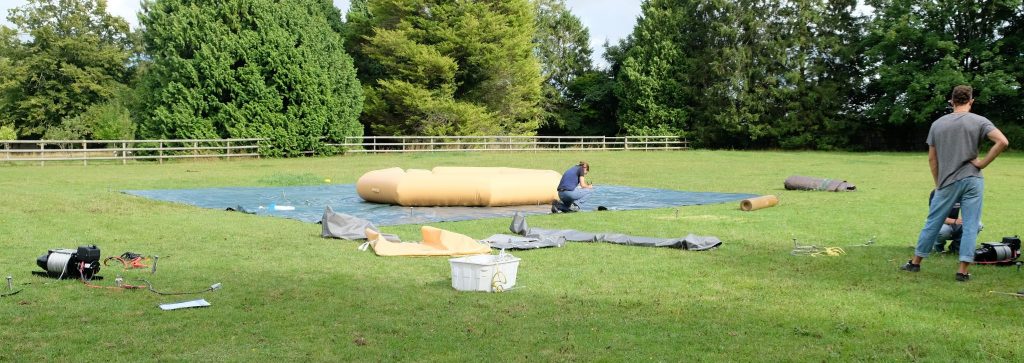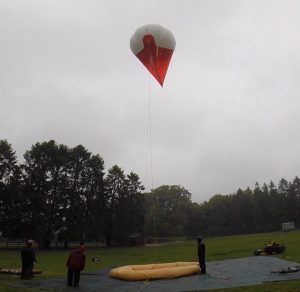On August 18th, the team members of the Extreme Environments Research Laboratory (EERL), participated in a helikite training in the UK. The helikite is part of the MoMuCAMS research project and will be used during field campaigns in polar regions for aerosol and trace gas vertical measurements.

MoMuCAMS (Modular Multiplatform Compatible Measurement System) is the latest research project taken up by the EERL laboratory. The primary objective of this project is to overcome the current lack of vertical measurements of atmospheric aerosols and trace gases in order to answer some long-standing questions on climate forcing in extreme environments and air quality issues. MoMuCAMS is a modular system equipped with miniaturized instrumentation for atmospheric research placed under a helikite.
A helikite is a unique combination between a helium tethered-balloon and a kite. When most tethered-balloons become unstable and are pushed down in windy conditions, the kite benefits of an additional upward force and thus, increased lifting capacity, while remaining highly stable. Our helikite has a volume of 45 m3 and a tether line of 800m, operated with an electric winch. The lifting force in no wind conditions is about 22 kg and can go up to 40 kg at 25 km/h wind. Hence, modularity of the MoMuCAMS is the key, as weather conditions will determine how much payload can be lifted.

This system will allow us to do vertical measurements of the lower atmosphere and better understand some of the mechanisms responsible for Arctic warming.
Helikite training
On the 18th of August, the EERL team members travelled to Fordingbridge (UK) to get a first look at their new helikite and learn how to operate it. Despite its apparent simplicity, operating the helikite requires a good knowledge of its mechanism and thorough preparation of the ground station (helibase) before it can be inflated and flown.
On the first day, after a theory on helikite manipulation, we headed to the field to set up the ground equipment, which represents the biggest work of the helikite operation. After unrolling the swimming pool-shaped helibase [which will hold the helikite in a stable position on the ground], a set of ground anchors are placed around and in the center of the helibase. Two electric winches with 400m of line each must then be placed upwind of the helibase and anchored to the ground. The lines are then pulled through a set of sheave blocks placed in the center of the helibase, which we then inflate (e.g, with a leaf blower).

On the second day, we finally got to see the helikite in action. Unfortunately, it only rained once that day (meaning it never stopped)! Not exactly, the type of extreme conditions we are used to. But that didn’t scare our helikite, which performed honorably!
After unrolling it on the helibase, the tethers are attached to the main hooks and several ropes are used to secure the helikite to the surrounding ground anchors ensuring stability during and after inflation. Five fifty-liter bottles of helium are needed to inflate our helikite, which takes about 45 minutes.
It’s almost time to fly the helikite!
After controlling that the main flying line is correctly attached to the helikite, and a few final checks, the different anchoring lines around the helikite can be detached.
Since that balloon is resting on its keel, a handling line is used for the first two meters of the ascent. The payload can then be attached to the keel and once the handling line is detached, we can start unrolling the main flying line to let the helikite ascend.

What’s next?
The MoMuCAMS package is currently under development and is planned to be deployed for a first field campaign in Villum, Greenland between March and May 2021. In order to test all systems, a field campaign will take place this winter in the Swiss Alps. Stay tuned for more news on our helikite!